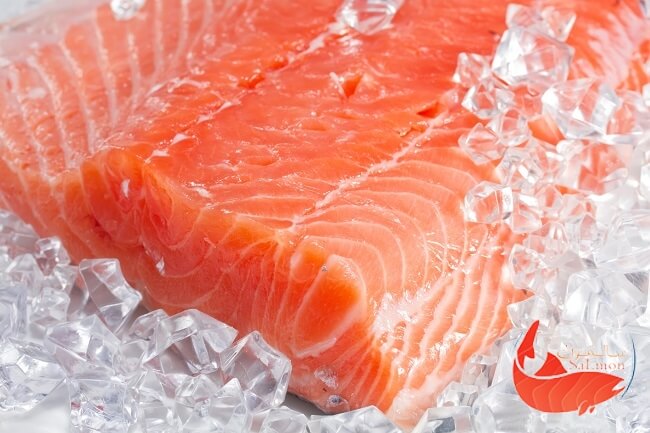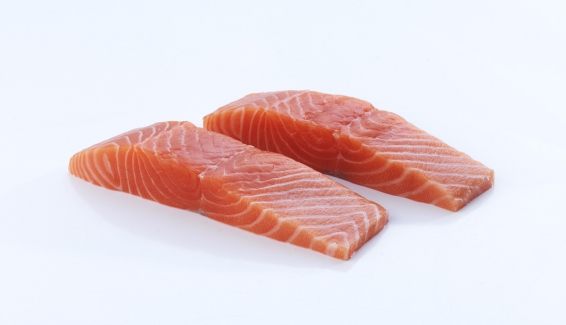Why Salmon Is One of The Best Fishes You Can Eat
Overview
Eating two or three servings of fish a week is a simple way to improve your health and stave off certain illnesses and diseases. Salmon is one of the most nutritious types of fish to add to your diet. It supplies iron, zinc, niacin, vitamin B6 and vitamin B12, in addition to a whole host of other nutrients you need for good health.
Salmon are selenium--rich fish.
How Much Selenium Is in Salmon?
Selenium is a mineral that keeps your thyroid working properly and boosts the health of your immune system. It also works as an antioxidant, which means that it destroys free radicals -- harmful chemicals that are produced by your body in response to aging, pollution and other environmental contaminants. You need 55 micrograms of selenium each day. A 3-ounce serving of pink salmon contains about 44 micrograms of selenium and the same amount of coho salmon supplies about 36 micrograms. Wild Atlantic and sockeye salmon provide similar amounts.
Salmon is a source of phosphorus.

How Much Phosphorus Is in Salmon?
Phosphorus is a mineral that works alongside calcium to build and maintain your bones and teeth. It also plays a role in the function of your kidneys, heart and nerves. You need 700 milligrams of phosphorus a day. A 3-ounce serving of wild Atlantic salmon contains 218 milligrams and the same amount of coho salmon contains 253 milligrams. Three ounces of pink salmon supplies 286 milligrams, and a 3-ounce serving of sockeye salmon has 269 milligrams.
Pink salmon is often canned, which extends its shelf life.
How Much Potassium Is in a Salmon Patty?
You need 4,700 milligrams of potassium a day to support the function of your muscles and to keep your heart beating normally. Potassium also promotes healthy digestion and a strong skeleton. Salmon supplies a good amount of this essential mineral. Salmon patties are usually made with canned pink salmon. A patty made with 3 ounces of pink salmon supplies about 300 milligrams of potassium.
Too much sodium can cause your blood pressure to increase.
How Much Sodium in Fresh Salmon?
Because salmon is an ocean animal, it naturally contains a small amount of sodium. Pink salmon contains the most with 343 milligrams per 3-ounce serving. A 3-ounce serving of wild Atlantic salmon has 48 milligrams, and the same amount of coho salmon contains 45 milligrams. Three ounces of sockeye salmon has 114 milligrams of sodium. You need some sodium in your diet to keep your nervous system working well, but the average diet contains far too much. When you eat too much sodium, you're at an increased risk of heart disease, hypertension and stroke. Healthy adults should consume no more than 2,300 milligrams per day.
A salmon meal is a significant source of protein and potassium.
How Much Potassium and Protein Is in Salmon?
The amount of potassium and protein in salmon depends on what type of the fish you're eating. All salmon contain the two nutrients, though. A 3-ounce serving of wild Atlantic salmon contains 21.6 grams of protein and 534 milligrams of potassium, and the same portion of coho salmon has 23.3 grams of protein and 387 milligrams of potassium. Three ounces of sockeye salmon contains 21.6 grams of protein and 347 milligrams of potassium.
Grilled salmon with vegetables is a nutritious meal.

How Much Protein Is in Grilled Salmon?
A 3-ounce serving of chinook salmon contains 21.9 grams of protein and the same amount of chum salmon provides about 22 grams. Three ounces of farmed Atlantic salmon supply about 19 grams of protein. Women need 46 grams of protein a day and men should have 56 grams. Protein helps your body rebuild and repair cells. Salmon is a complete source of protein, which means that it contains all of the essential amino acids you need.
All types of salmon contain unsaturated fats.
Does Salmon Contain Healthy Fat?
Salmon is a source of unsaturated fats -- healthy types of fat that help protect your health -- called polyunsaturated fats and monounsaturated fats. Both kinds of healthy fats help normalize your heartbeat and ease inflammation, which is a response from your immune system that can increase your risk of cancer and other chronic illnesses. A 3-ounce serving of wild Atlantic salmon supplies 4.9 grams of unsaturated fats, and the same portion of coho salmon contains 4.4 grams. Three ounces of sockeye salmon have 2.5 grams of unsaturated fats, and a 3-ounce serving of farmed Atlantic salmon provides 7.4 grams.
Adding salmon to your diet can help protect your heart.
Is Salmon Heart Healthy?
Salmon contains a specific type of unsaturated fat called omega-3 fatty acids. Omega-3 fatty acids lower your risk of dying from heart disease, according to Mayo Clinic. The omega-3 fatty acids in salmon help keep your heart healthy by protecting the health of your blood vessels. They help lower triglycerides, reduce your blood pressure and prevent blood clots, effects that go a long way toward protecting your heart. Choosing salmon over red meat can help lower your cholesterol -- the waxy substance that can build up in your arteries and increase your risk of heart attack -- because salmon is much lower in saturated fat than beef, pork and some cuts of poultry.
Increase your protein intake with heart-healthy salmon.
How Much Protein Is in One Serving of Salmon?
While the specific protein content varies depending on what type of salmon you're eating, a 3-ounce serving contains an average of about 20 to 21 grams. Eating a serving of any kind of salmon is a nutritious way to make sure you're getting plenty of protein. It's also much lower in saturated fat than red meat.
Salmon doesn't have carbohydrates.
How Many Carbohydrates Are in One 4 Ounce Salmon?
Salmon contains no carbohydrates unless you add them in the form of sauces or other condiments. Carbohydrates are often thought of as a diet enemy, but you actually need some carbohydrates to sustain your energy levels. Limiting your intake of simple carbohydrates, such as those found in white bread and white pasta, can help you maintain your weight. Eating complex carbohydrates, such as those found in fruit, vegetables and whole grains, can help protect you from heart disease because they also contain a good dose of fiber.
Salmon is a no-carb addition to your diet.
Does Salmon Fit into a Low Carb Diet?
Salmon fits into any healthy diet. It doesn't contain carbohydrates, which makes it a perfect addition to a low-carb diet. In addition to not having carbohydrates, salmon also supplies many of the vitamins and minerals you need each day. Grill a fillet for dinner or shred the meat into a tossed green salad. Add it to soup or stew or whip up a batch of salmon cakes using canned salmon. Any way you add salmon to your diet will give you nutritional benefits.





